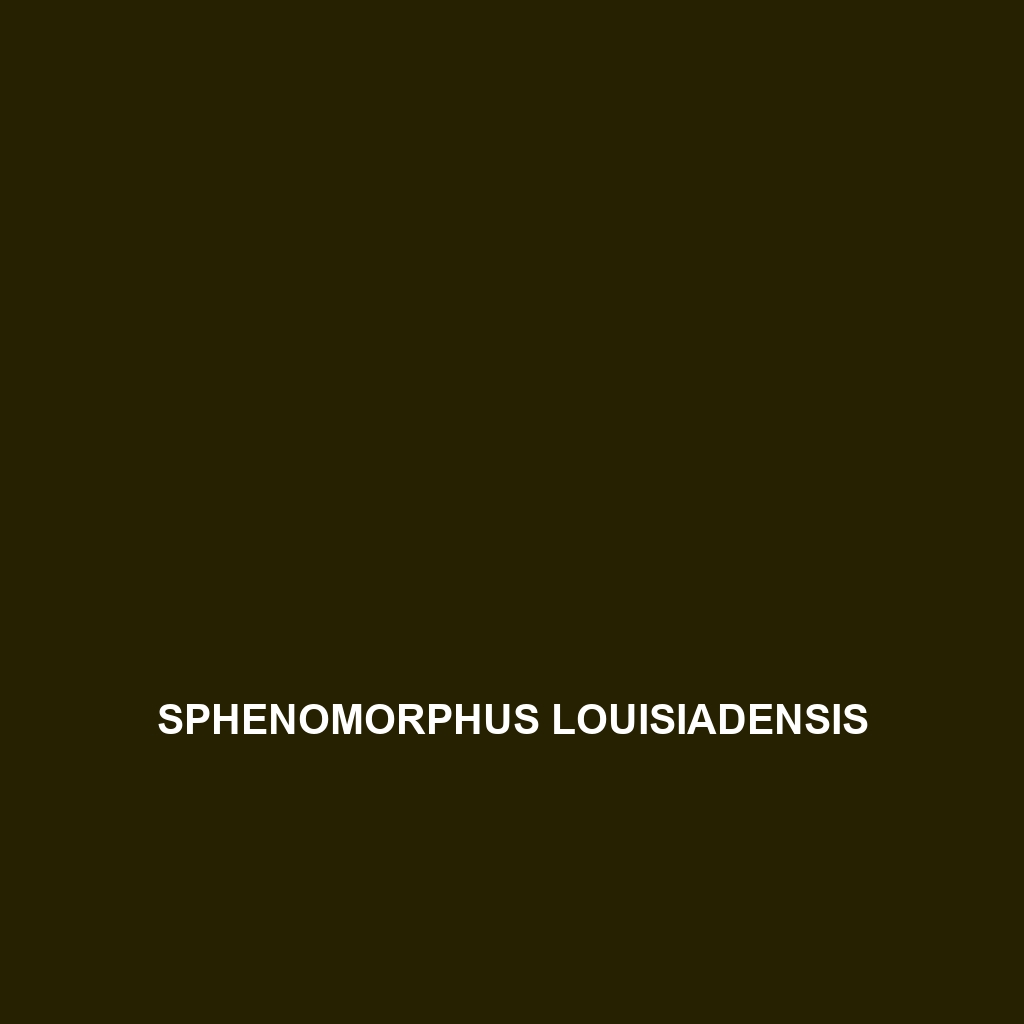<p><b>Sphenomorphus schlegeli</b>, commonly known as Schlegel's skink, is a vibrant insectivorous reptile native to the humid tropical forests of Southeast Asia. With distinctive smooth scales and an agile nature, this skink plays a vital role in its ecosystem by regulating insect populations and serving as prey for larger animals.</p> </div>
Tag: ecological role of skinks
Sphenomorphus sanana
Discover the stunning Sphenomorphus sanana, or Sanana skink, a vibrant insectivorous reptile found in the tropical rainforests of Southeast Asia. With its unique coloration, agile movements, and a vital role in ecosystem balance, this species showcases remarkable adaptations, including tail regeneration, essential for survival in its natural habitat.
Sphenomorphus meyeri
Discover the Meyer's Skink (Sphenomorphus meyeri), a sleek, agile reptile native to Southeast Asia's moist forests, reaching lengths of 15 to 25 cm. With a diet primarily consisting of insects, this resilient species exhibits remarkable camouflage and tail regeneration, playing a vital role in pest control and the ecosystem's balance.
Sphenomorphus malaisei
<p><b>Sphenomorphus malaisei</b>, a medium-sized skink native to Southeast Asian rainforests, features a streamlined body measuring 15 to 25 cm and exhibits a rich brown to dark green coloration, aiding in its camouflage. This insectivorous species is known for its agility and unique defense mechanism of tail dropping when threatened, making it a crucial part of its ecosystem.</p>
Sphenomorphus louisiadensis
Introducing the Sphenomorphus louisiadensis, or Louisade skink, a medium-sized lizard native to the Southwest Pacific's humid environments. Known for its sleek body with distinct stripes, this carnivorous species plays a crucial ecological role by controlling insect populations and serves as both predator and prey in its vibrant habitat.
Sphenomorphus longicaudatus
<b>Sphenomorphus longicaudatus</b>, commonly known as the long-tailed skink, is a diurnal insectivore found in humid, well-vegetated habitats across Southeast Asia. Recognizable by its elongated body and tail, this species exhibits remarkable agility and camouflage, playing a vital role in pest control and as a prey species within its ecosystem.
Sphenomorphus jobiensis
<p><b>Sphenomorphus jobiensis</b>, commonly known as the Jobi skink, is a diurnal insectivore found primarily in the tropical rainforests of Papua New Guinea, characterized by its elongated body, vibrant coloration, and unique climbing abilities. This non-aggressive species plays a critical role in controlling insect populations while also being an essential part of its ecosystem's food web.</p>
Sphenomorphus cyanolaemus
<p><b>Sphenomorphus cyanolaemus</b>, commonly known as the Blue-Winged Skink, is a vibrant insectivore native to tropical rainforests, characterized by its striking blue coloration and agile movements. This unique species thrives in humid environments, helping to regulate insect populations while playing a crucial role in its ecosystem.</p>
Sphenomorphus crassus
<p><b>Sphenomorphus crassus</b>, commonly known as the thickset skink, is a robust, diurnal skink native to the tropical and subtropical forests of Southeast Asia. Reaching lengths of 10 to 15 centimeters, it feeds primarily on small invertebrates and plays a crucial role in regulating insect populations within its ecosystem.</p>
Sphenomorphus cinereus
<p>The <b>Ashy Skink (Sphenomorphus cinereus)</b> is a tropical and subtropical skink known for its slender body and distinctive grey to brown coloration, thriving in humid rainforest environments of Southeast Asia. This diurnal insectivore plays a vital role in controlling insect populations while exhibiting fascinating behaviors and minimal parental care postpartum.</p>









